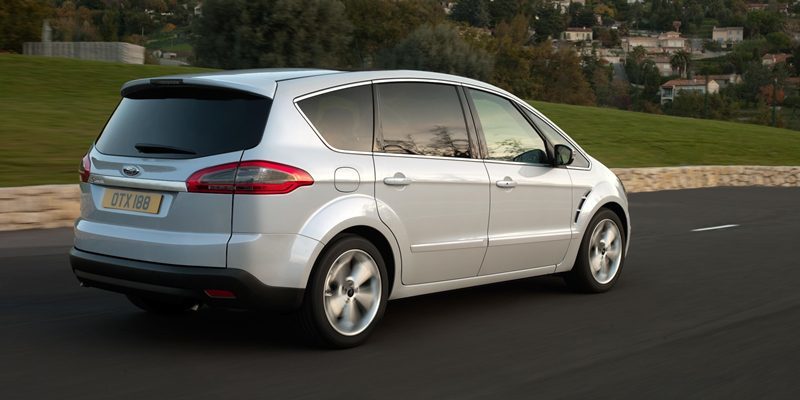Ford has earned a reputation for creating people carriers that are more fun to drive than many of their competitors, and the 2010 version of the S-Max is no exception.
It takes styling cues from the much-loved Mondeo, and upper-spec models are paired with smart alloys, chrome and other touches that add up to a fine-looking vehicle.
Engine-wise, there are 2.0 litre petrol units with 145hp or a turbo-assisted 203bhp. Much more likely is the S-Max you buy will be equipped with either the 140hp or 163hp 2.0 litre diesel units.
Both of these are tried, tested and very good, delivering fuel economy in the high 40s and hitting 62mph from standstill in a little over or under 10 seconds, depending on whether it’s the higher or lower-powered version. At the top end, there’s also a 2.2 litre diesel with 175hp.
I drove the 163hp version with Ford’s six-speed double-clutch automatic transmission.
Automatics have come a long way since the old days. It used to be the case that they made a car slower and less economical, but increasingly they match the manual’s performance figures and in some cases exceed them.
Ford’s six-speed Powershift system isn’t quite as good as the best automatic units from BMW, but it shifts gear almost imperceptibly and is only a smidgeon slower and less frugal than the manual.
My feeling is cars this size are better as automatics heaven knows the typical people carrier driver has a spouse and kids to contend with, and doesn’t need the added distraction of changing gears.
One of the S-Max’s main strengths is it’s a very sharp handler, never feeling unsettled or van-like during cornering. Adding to the package is a fine ride, which soaks up bumps and makes long-distance journeys comfortable affairs.Driving comfortI took it on a four-day tour round the west coast and the Borders and never once emerged tired or sore.
Adding to the package are quality materials, a well laid-out dash and big chunky buttons that make adjustments on the move an easy affair. A panoramic glass roof floods the interior with light.
There’s plenty of room for full-size adults in the front and middle row of seats, though the rearmost pair should only be raised from their hiding place inside the floor for children or adults who enjoy a degree of discomfort leg and headroom are both poor.
Those needing a roomier seven-seater should go for Ford’s bigger Galaxy (the S-Max is basically a Galaxy with a bit chopped off it), or Volkswagen’s new Sharan.
It’s better treated as a car that can hold five adults and a huge amount of luggage. All five rear seats fold flat to the floor, leaving a capacious 2000 litres of load space.
Regular readers of this column will recall me liking Peugeot’s 5008 a couple of weeks ago. Well, the S-Max can be added to the list of people carriers I’d be happy to own.
Perhaps I’m getting old.
Price: £24,495.0-62mph: 9.8 seconds.Top speed: 126mph.Economy: 47.1mpg.CO2 emissions: 159g/km.
